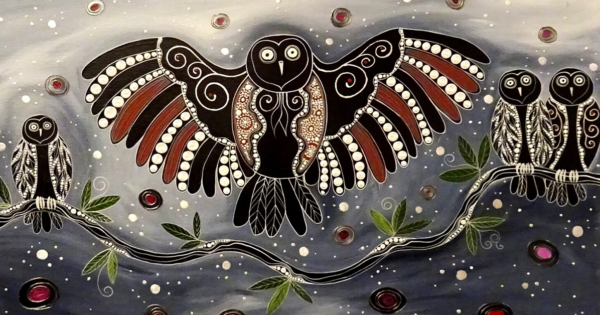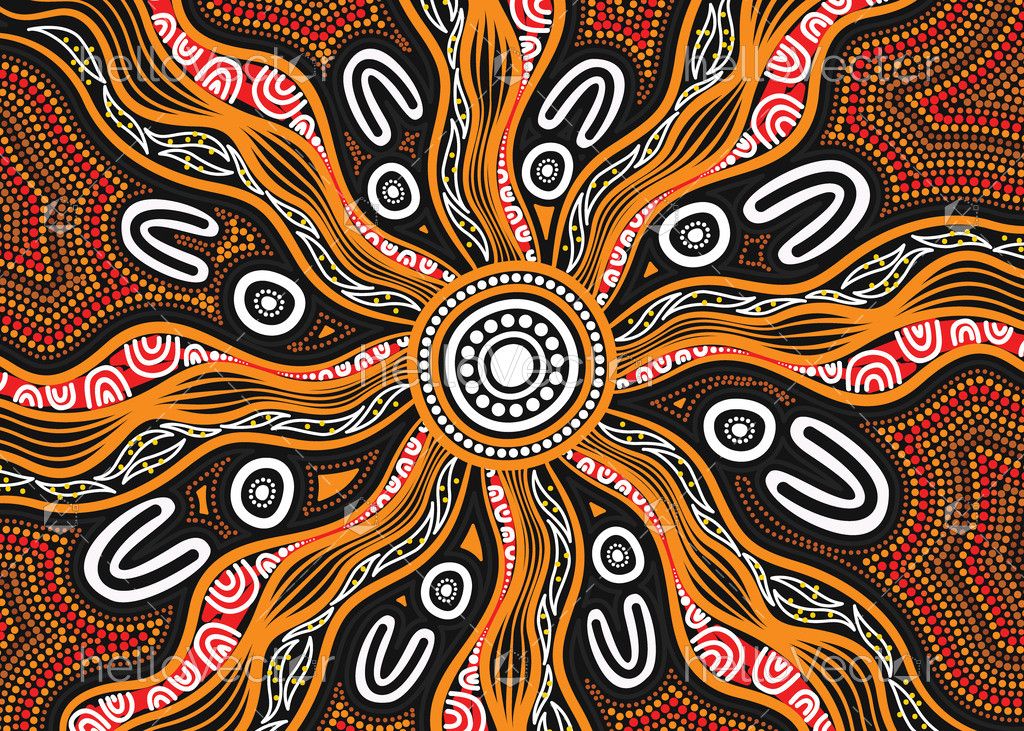Sacred Animals in Aboriginal Culture: A Deep Connection to the Land and Spirit
Sacred Animals in Aboriginal Culture: A Deep Connection to the Land and Spirit

Across the vast and diverse landscape of Australia, Aboriginal culture flourishes with a deep reverence for the natural world. This reverence manifests in the profound respect and connection they hold for animals, many of which are considered sacred. These animals are not just creatures of the land but are deeply intertwined with Aboriginal spirituality, mythology, and traditions, serving as powerful symbols of creation, kinship, and the interconnectedness of all life.
The Significance of Sacred Animals:
Related Articles: Sacred Animals in Aboriginal Culture: A Deep Connection to the Land and Spirit
- A Buzzing World: Exploring The Diverse Habitats Of Australian Bees
- The Gumleaf: A Unique And Ancient Australian Instrument
- Weaving Meaning & Legacy: Exploring The Rich Tapestry Of Indigenous Female Names
- Aromatic Aussie Icons: Exploring The Beauty And Benefits Of Native Evergreen Trees With Stiff, Pleasant-Smelling Leaves
- Unveiling Australia’s Linguistic Tapestry: A Journey Through The Map Of Languages
For Aboriginal people, the concept of "sacred" goes beyond simply holding animals in high regard. It signifies a profound spiritual connection, a belief that these animals embody ancestral spirits, hold ancient wisdom, and play a vital role in maintaining the balance of the natural world. This connection transcends the physical realm, encompassing the spiritual and ancestral dimensions of their existence.
The Rainbow Serpent:
One of the most prominent and widely revered sacred animals in Aboriginal mythology is the Rainbow Serpent. This mythical creature, often depicted as a giant serpent adorned with vibrant colors, is associated with creation, water, fertility, and the life-giving power of the land. In many Aboriginal creation stories, the Rainbow Serpent is credited with shaping the landscape, carving out rivers and valleys, and bringing life to the earth.
The Rainbow Serpent is not just a mythical figure; it represents a powerful force of nature and a spiritual guide. Its presence is often associated with rain, thunderstorms, and the renewal of life. It is believed to possess immense power, capable of both creation and destruction, and its role in maintaining the balance of the natural world is paramount.
The Emu:
Another significant sacred animal is the Emu, a large flightless bird native to Australia. The Emu is a symbol of resilience, strength, and adaptability, reflecting its ability to thrive in the harsh and diverse Australian environment. In Aboriginal mythology, the Emu is often associated with the ancestral beings who created the land, and its feathers are considered sacred and are used in ceremonies and rituals.
The Emu is also a source of sustenance for many Aboriginal communities, and its eggs and meat are highly prized. However, the respect for the Emu goes beyond its practical value. It is a symbol of the interconnectedness of all life, reminding people of their responsibility to care for the land and its creatures.
The Dingo:

The Dingo, a wild dog native to Australia, holds a complex and multifaceted position in Aboriginal culture. While it is sometimes seen as a competitor for food and resources, it is also recognized for its intelligence, loyalty, and connection to the land. In some Aboriginal traditions, the Dingo is considered a spirit animal, representing the wildness and untamed nature of the bush.
The Dingo is also associated with the Dreamtime, the ancestral period when the world was created. In some creation stories, the Dingo is said to have played a role in shaping the landscape and establishing the laws of the land. The Dingo is a reminder of the enduring connection between humans and the natural world, and its presence in the Australian landscape is a testament to the resilience of both species.
The Koala:
The Koala, a cuddly marsupial known for its love of eucalyptus leaves, is a beloved animal in Aboriginal culture. It is often associated with peace, gentleness, and the importance of living in harmony with nature. The Koala is also a symbol of the interconnectedness of all living things, as its survival depends on the health of the eucalyptus trees.
In some Aboriginal traditions, the Koala is believed to possess spiritual powers, and its fur is considered sacred. The Koala is a reminder of the importance of respecting all creatures, big and small, and of living in harmony with the natural world.

The Importance of Respect and Conservation:
The reverence for sacred animals in Aboriginal culture is not just a matter of mythology and tradition; it is a fundamental principle that guides their relationship with the natural world. Respect for these animals extends to their habitat, their role in the ecosystem, and their importance to the spiritual well-being of the community.
This respect is reflected in the careful management and conservation practices employed by Aboriginal people. They understand that the health of the land and the well-being of its creatures are inextricably linked to their own survival. This deep connection to the land and its creatures is a testament to the wisdom and sustainability of Aboriginal culture.
The Impact of Colonialism:
The arrival of European settlers in Australia had a devastating impact on Aboriginal culture and their relationship with sacred animals. The introduction of invasive species, the destruction of habitat, and the hunting of native animals disrupted the delicate balance of the ecosystem and threatened the survival of many sacred species.

The loss of sacred animals has had a profound impact on Aboriginal spirituality and identity. It has severed the connection to the ancestral beings who created the land and has diminished the power of traditional knowledge and practices.
The Importance of Reconciliation and Respect:
Reconciliation between Aboriginal and non-Aboriginal Australians is essential for the protection and preservation of sacred animals. This requires a deep understanding and appreciation of Aboriginal culture and traditions, including their reverence for the natural world.
It is crucial to recognize the importance of Aboriginal knowledge and practices in managing and conserving sacred animals. By working together, Aboriginal and non-Aboriginal Australians can ensure that these animals continue to thrive and that the connection to the land and spirit remains strong.
The Legacy of Sacred Animals:
The sacred animals of Aboriginal culture are not just creatures of the past; they are living symbols of the deep connection between humans and the natural world. They remind us of the importance of respect, conservation, and the interconnectedness of all life. By honoring these animals and their place in Aboriginal spirituality, we can contribute to a more sustainable and harmonious future for all.
FAQ About Sacred Animals for Aboriginal People:
Q: What is the significance of sacred animals in Aboriginal culture?
A: Sacred animals are more than just creatures; they are embodiments of ancestral spirits, holders of ancient wisdom, and vital elements in maintaining the balance of the natural world. They are deeply intertwined with Aboriginal spirituality, mythology, and traditions.
Q: What are some examples of sacred animals in Aboriginal culture?
A: Some examples include the Rainbow Serpent, Emu, Dingo, Koala, and many others, each with its unique symbolism and connection to the land and spirit.
Q: How do Aboriginal people show respect for sacred animals?
A: Respect is shown through careful management and conservation practices, understanding their role in the ecosystem, and incorporating them into ceremonies and rituals.
Q: How has colonialism impacted the relationship between Aboriginal people and sacred animals?
A: Colonialism has led to habitat destruction, invasive species introduction, and overhunting, disrupting the balance of the ecosystem and threatening the survival of many sacred species.
Q: What can be done to protect and preserve sacred animals?
A: Reconciliation, respect for Aboriginal knowledge, and collaborative conservation efforts are crucial to ensuring the continued existence of these animals and the spiritual connection they represent.

Closure
Thus, we hope this article has provided valuable insights into Sacred Animals in Aboriginal Culture: A Deep Connection to the Land and Spirit. We hope you find this article informative and beneficial. See you in our next article!


